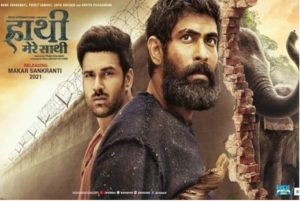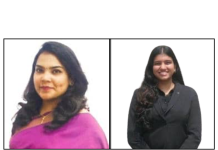Dr. Reddy’s Laboratories Ltd. (“Plaintiff”) filed before the Hon’ble Delhi High Court a case for infringement of its registered trademark in a Hindi feature film titled ‘Haathi Mere Saathi’.
The matter was heard by The Hon’ble Justice Sanjeev Narula, and order was pronounced on 23rd March, 2021, in favour of the defendants being Eros International Media Ltd. & Ors (“Defendants”).
It was held that the Plaintiff had failed to meet the three-pronged test for grant of injunction. The Plaintiff did not have a prima facie case in its favour, the balance of convenience was in favour of Defendants and not in favour of the Plaintiff. The Plaintiff had not been able to make out a case of irreparable loss that it would suffer if the movie was released.
I. Facts of the Case
- The Plaintiff is the registered proprietor of the word mark ‘DRL’ under Trade Mark Registration No. 1529767 dated 09th February 2007 in Class 05 (pharmaceutical preparations).
- In February, 2020, the Plaintiff had noticed the usage of the term ‘DRL’ by the Defendants in the aforementioned upcoming film and had issued a notice dated 3rd March, 2020, to the Defendants asking to delete the relevant scenes from the film. However, no reply was received.
- A year later, the Defendants released a trailer on YouTube on or around March, 2021, thereafter the Plaintiff issued another notice to the Defendants on 8th March, 2021. Denying all allegations, Defendants replied to the notice on 12th March, 2021, leading to filing of this suit by the Plaintiff.
II. Plaintiff’s Contention
- Plaintiff relied on various newspaper publications and internet search results to establish its distinctive association to the said mark ‘DRL’.
- Plaintiff’s reputation was not limited to the healthcare industry, but had spread far and wide by virtue of the CSR activities.
- The use of the registered trademark by the Defendant would amount to infringement of the registered mark and would also amount to passing off. Section 29 (6) and (8) of the Trademarks Act was relied upon by the Plaintiff.
III. Defendant’s Contention
- The Plaintiff cannot claim monopoly over the English letters D-R-L beyond its purported limited right under the Trademark Act.
- A list of registered marks bearing the same initials (refer table hereunder) were presented before the Hon’ble Court

- Plaintiff was late in approaching the Hon’ble Court as it was aware of the usage by Defendants from February, 2020.
- Plaintiff’s reliance on Section 29 of the Trademark Act is misplaced as the same is pertaining to advertisements.
IV. Analysis and Findings
The Hon’ble Justice Sanjeev Narula in his judgement (summarized hereunder) in a very systematic manner addressed the case at hand.
a. What is Plaintiff’s right over the acronym/ letters ‘DRL’?
- The Plaintiff did not file any evidence along with the plaint to show usage of the registered mark in respect of pharmaceutical preparations or otherwise, nor had the Plaintiff filed any advertisement extracts, invoices, product packaging, etc. to show the Court that the Plaintiff was using DRL in relation to its products/ services.
- In Corn Products Refining Co. Ltd. vs. Shangrila Food Products Ltd, the Hon’ble Supreme Court held that it is not permissible to draw any inference as to use from mere presence of the mark on the register. To sustain an action of infringement it is imperative to exhibit continuous and sustained use of the mark, to demonstrate that it has acquired distinctiveness.
- The Court also opined that, registration of the trademark in one class cannot, by itself, give the Plaintiff an unrestricted right or monopoly over the letters D, R and L, when used in that order.
- The Plaintiff was trying to establish its association with the work mark ‘DRL’, mainly based on news articles in which the acronym ‘DRL’ is followed or preceded by the full name of the Plaintiff, showing that the acronym is used for mere ease of reference.
- Basis the arguments put before the Hon’ble Court, it further opined that the usage of DRL was carried out by various entities registered before the MCA and also having registered marks before the Trademark Registry, further the initials ‘DRL’ was also used in relation to several types of business.
- The Court held that there was no material to hold DRL is synonymous with the Plaintiff’s corporate name. In the absence of the same, the Plaintiff does not meet the test of establishment of a prima facie case, so as to be entitled to an injunction.
b. Whether the usage of ‘DRL’ in the movie amounts to infringement of the Plaintiff’s Trademark
- The usage of ‘DRL’ in the film is not on a stand alone basis but a composite term such as ‘DRL – Drishti Refineries Ltd.’ or ‘DRL Group’ or ‘DRL Township’.
- The Court held that the fictitious entity of Drishti Refineries Limited was involved in the business of setting up refinery plants, which was completely distinct from that of the Plaintiff and usage of acronym ‘DRL’, had no co-relation with the Plaintiff’s primary trademark – Dr. Reddy and/or its body corporate i.e. Dr. Reddy’s Laboratories Ltd. Thereby opining that Court found no merit in the contention of the Plaintiff.
- The Hon’ble Court held that the argument of the Plaintiff that the villainous portrayal of DRL in the film would be detrimental to the reputation of the Plaintiff was far fetched, creative, and based on assumptions and surmises and lacking material foundation. The Court further opined that the Plaintiff was also unable to show any material that the teaser/trailer of the film, which has been in the public domain for nearly one year, had made any negative impact in the minds of general public or that the use of ‘DRL’ has been understood to be as reference to the Plaintiff company.
- The Court then dealt with the reliance on Section 29(8) of the Plaintiff and held that the plaint did not even pray for relief on the account of infringement. Section 29, which deals with infringement, has several sub-Sections, all of which have to be read together in conjunction.
- The Court held that one can easily notice that the Defendants’ use of DRL, certainly, was not akin to the use of a trademark, in respect of the goods/services for which the Plaintiff is the proprietor and therefore is not likely to cause confusion in the minds of a consumer as to the identity of those goods or services, thereby the Court did not find a prima facie case of infringement.
- The Court thereafter went onto the judgements relied upon by the Plaintiff and opined as under:
| Judgement | Court Held |
| Hamdard National Foundation and Anr. Vs. Hussain Dalal and Ors. | The Court in the present case held that the judgements was distinguishable on facts –
the plaintiff therein claimed that the remarks made against the quality of its beverage, by a character in a cinematographic film, were detrimental and damaging to its goodwill and reputation, and sought an injunction on this basis.
As the usage of the product in Hamdard was targeted and specific, through visual as well as spoken depiction, and was avoidable, uncalled for, and in poor taste. Thus the same was likely to tarnish the reputation of the brand among its consumers. For such reasons, a partial restrain was allowed by the High Court, by directing the producers to omit the objectionable dialogue from the home video version of that film. |
c.Delay in approaching the Court
- The Court held that the Plaintiff had knowledge of the usage of the mark by the Defendant way back in 2020, thereafter, the Plaintiff after issuance of a notice had taken no measure/ action against the alleged infringement, until now, when the Defendant has gone ahead with the preparations for the release of the movie by expending monies, time and energy and entering into contracts with third parties.
- The Hon’ble Court opined that the Plaintiff’s argument that the present suit was timely, was not convincing in the slightest and did not justify the delay of filing the present action, the timing which is highly suspect and belated, being just few days before the date of release of the movie. The Court held that this laxity would disentitle the Plaintiff of the discretionary relief of injunction, which is based on equity.
- The Court further opined that, on the ground of delay itself, the Plaintiff would be disentitled to the relief of injunction as sought for in the present application.
V. Conclusion
The Hon’ble Court held that the Plaintiff had failed to meet the three-pronged test for grant of injunction. The Plaintiff did not have a prima facie case in its favour, the balance of convenience was in favour of Defendants and not in favour of the Plaintiff. The Plaintiff had not been able to make out a case of irreparable loss that it would suffer if the movie was released.
Image source: here
















